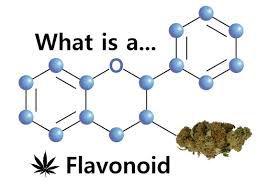Flavinoids are antioxidants, which may play a significant role in heart health and may help to prevent diseases caused by free-radical damage, such as cancer.
The word “flavonoid” actually comes from the Latin term flavus, referencing the color yellow as it appears in nature. This makes sense considering a primary function of flavonoids is to provide color pigmentation to plants, notably in flowers, for the purpose of attracting pollinators.
You’ve heard that “eating the rainbow” is good for your health. But do you know why? Colorful produce contains special compounds called flavonoids, which are plant-based nutrients that offer plenty of health benefits from reducing inflammation to slashing your risk of certain diseases.
Flavinoids, What the Heck Are Flavinoids?
In an August 2019 study published in Nature, researchers found that regularly eating foods rich in flavonoids was associated with a reduced risk of developing heart disease and cancer. That association was even stronger among people who smoked or drank large amounts of alcohol, which are two groups that tend to have higher levels of inflammation.
There are six flavonoid subgroups: flavonols, flavones, isoflavones, flavanones, chalcones and anthocyanins:
| FLAVINOID | FOOD or CHARACTERISTIC |
|---|---|
| Flavonol | • Berries • Tomatoes • Onions • Kale • Apples • Cherries • Broccoli • Grapes • Red wine • Green tea |
| Flavones | • Celery • Broccoli • Green pepper • Carrots • Olive oil • Navel oranges • Parsley • Thyme • Oregano • Dandelion • Peppermint • Rosemary • Chamomile tea |
| Isoflavones | • Soybeans (and soy products such as tofu) • Alfalfa sprouts • Peanuts • Legumes |
| Flavanones | • Grapes • Oranges • Lemon • Lime |
| Chalcones | • Chalcone is an aromatic ketone and an enone that forms the central core for a variety of important biological compounds, which are known collectively as chalcones or chalconoids. |
| Anthocyanins | • Purple Colored Cannabis |
Flavonols
Flavonols are the largest and most well-known subgroup of flavonoids. Flavonols, especially quercetin, have been studied extensively for their role as an antioxidant.
Oxidative damage to the body is responsible for neurodegenerative diseases like Alzheimer’s and Parkinson’s and many cancers.
Flavones
One of the major health benefits from flavones is their anti-inflammatory effects, according to a June 2016 study in Plants. Inflammation is usually the common thread between many chronic conditions, such as obesity, diabetes and cancer.
Isoflavones
The king of all plant proteins is the soybean, which is high in catechins and a particular type of flavonoid, isoflavones. Isoflavones have a mixed reputation because of their similarity in structure to estrogens.
Flavanones
Flavanones are found in citrus fruits, in the juice and in the peel — and yes, you can eat the peel. The flavanones are responsible for that bitter taste, which most people stay away from. Flavanones are antioxidants and anti-inflammatory, and they have been shown to lower cholesterol.
What Are Cannabis Flavonoids And Why Do They Matter?
To date, researchers have discovered 483 unique compounds in the cannabis plant, including cannabinoids, terpenes, and flavonoids. In recent years flavonoids have taken a back seat while much has been talked about cannabinoids and terpenes.
Flavinoid Research
Researchers have discovered nearly 6,000 different types of flavonoids in nature with many of them being unique to specific plants. Cannabis plants contain several flavonoids that are found nowhere else in nature, known as cannaflavins.
Flavonoids are phytonutrients that are found in nearly all fruits and vegetables. These compounds are primarily responsible for giving fruits and vegetables their color. Flavonoids serve numerous purposes throughout nature like helping flowers attract pollinators or protecting plants from potential threats such as the sun’s damaging UV rays or pests and diseases.
Cannabis flavonoids are primarily responsible for giving cannabis plants their pigmentation. For instance, the deep purple color of certain strains is attributed to the flavonoids anthoxanthins and anthocyanins.
Flavonoids Are the Future of Cannabis Research
 Flavonoids have been incredibly understudied. Up to this point, researchers have primarily been concerned with unlocking the full potential of cannabinoids and terpenes but now, flavonoids are the future.
Flavonoids have been incredibly understudied. Up to this point, researchers have primarily been concerned with unlocking the full potential of cannabinoids and terpenes but now, flavonoids are the future.
Could Flavonoids Play a Role in Pain Relief?
There have been 200 or more bioactive compounds that have been discovered in cannabis. Flavinoids account for roughly 10% of these known compounds with around 20 varieties known to exist in cannabis. Similar to terpenes, flavonoids share a role in how we perceive cannabis through our senses. But there’s a lot more to flavonoids than what meets our nose and taste buds.
In 1986, a researcher from the University of London was able to isolate two cannaflavins and found them to have extremely potent anti-inflammatory effects.
More specifically, the anti-inflammatory effects produced by Cannaflavin A and Cannaflavin B are believed to be up to 30x more potent than those produced by Aspirin. However, despite their effectiveness, the amount of cannaflavins in cannabis is actually very small. Cannaflavins are believed to make up less than 0.15% of the fresh weight of cannabis.
Cannabis molecules stop inflammation at the source and do not pose the same health risks as the over the counter NSAIDs:
- Aspirin
- Ibuprofen
- Advil
Flavonoids and Cannabis
Both odor and flavor are possible in cannabis due to the synergistic qualities that terpenes and flavonoids share with one another. Moreover, flavonoids also affect the pigmentation of cannabis, just as they do with other flowers.
Those beautiful, deep purple cannabis strains owe their coloration to the flavonoids known as anthoxanthins or anthocyanins.
What To Do Next
If you’re interested in learning more about Flavinoids, Book a Happy Travelers Tours Wine and Weed Tour and get up-close-and-personal with Cannabis Plants.
Join us and see Cannabis Flavinoids in person or read: Terpenes, What the Heck Are Terpenes or Trichomes, What the Heck Are Trichomes!